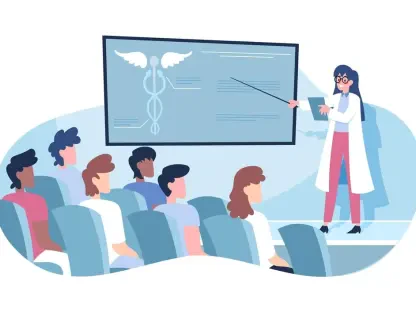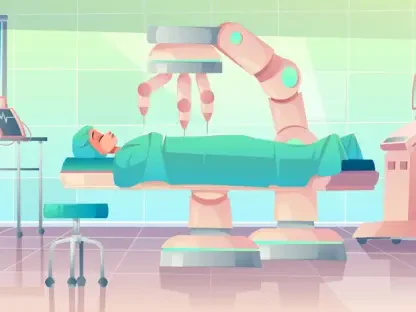In a small town in rural New Mexico, a mother of two drives four hours each way just to see an obstetrician for routine prenatal care, her journey a stark symbol of a healthcare system stretched beyond its limits, while thousands across the state face similar struggles—waiting months, even up to a year, for specialist appointments as others abandon hope altogether due to inaccessible clinics. This crisis of access, deeply felt by everyday residents, raises a pressing question: can the voices of patients themselves spark the change needed to rebuild a broken system?
The significance of this issue cannot be overstated, as New Mexico grapples with one of the most severe healthcare provider shortages in the nation, particularly in underserved rural areas. With clinics closing and doctors leaving due to systemic barriers, the human toll mounts—canceled surgeries, untreated conditions, and lives disrupted by delays. Amid this, a grassroots movement led by patients is emerging as a potential catalyst for reform, aiming to bridge the gap between personal hardship and policy action through raw, unfiltered stories that demand attention.
Why Are New Mexicans Waiting Months for Care?
The reality of healthcare in New Mexico paints a grim picture, where delays are not mere inconveniences but life-altering obstacles. Reports indicate that some patients endure waits of nearly 12 months to consult with specialists like neurologists or cardiologists, while others must travel hundreds of miles for basic services due to local clinic closures. These barriers disproportionately affect rural communities, where the nearest medical facility might be across state lines, turning routine care into an exhausting ordeal.
Beyond the numbers, the personal impact is profound, as families juggle work, childcare, and finances to secure medical attention far from home. A single missed appointment can mean starting the waiting game anew, often with worsening health conditions as the clock ticks. This struggle is not just a statistic but a daily burden for countless residents, highlighting the urgent need for solutions that prioritize timely access over bureaucratic hurdles.
The frustration among patients has reached a boiling point, with many feeling unheard by a system that seems indifferent to their plight. Social media platforms and community forums buzz with shared experiences of canceled procedures and unanswered calls to overbooked offices. This collective discontent sets the stage for a deeper exploration of why such a crisis persists and whether those most affected can drive meaningful change.
Unpacking New Mexico’s Healthcare Breakdown
At the heart of the state’s healthcare woes lies a critical shortage of medical providers, a problem worsened by systemic failures that have unfolded over years. Rural areas, in particular, have seen a wave of clinic closures, with some counties lacking even a single primary care physician for thousands of residents. This forces many to seek care out of state, a solution that is neither sustainable nor equitable for those without the means to travel.
Health equity emerges as a central concern, as the lack of specialists and long wait times disproportionately harm low-income and minority populations who already face barriers to care. Data from state health reports show that over 30% of New Mexicans live in areas designated as medically underserved, a figure that underscores the scale of the challenge. This isn’t merely a local issue but a mirror to broader national struggles with healthcare access and distribution.
The ripple effects extend beyond individual patients to entire communities, where untreated illnesses strain local economies and social structures. Schools report higher absenteeism due to health issues, while employers note productivity losses from workers unable to access timely treatment. Addressing this breakdown demands not just more doctors but a rethinking of how care is delivered in a state with unique geographic and demographic challenges.
The Hidden Forces Driving Doctors Away
Delving into the provider shortage reveals a web of structural barriers pushing medical professionals out of New Mexico. Strict licensing regulations create hurdles for out-of-state doctors who might otherwise relocate, while high malpractice insurance costs deter many from practicing in a litigious environment. Additionally, tax policies that burden small practices make it financially unfeasible for clinics to operate in less populated areas.
Insights from industry leaders shed light on the gravity of these issues. Annie Jung of the New Mexico Medical Society points out that “the regulatory maze discourages even the most dedicated physicians from staying or coming here.” Similarly, Troy Clark of the New Mexico Hospital Association notes that rural hospital closures often stem from unsustainable financial models, leaving entire regions without emergency care. These expert perspectives connect policy decisions to the empty waiting rooms patients face daily.
Emerging solutions offer a glimmer of hope, such as joining national licensing compacts to streamline credentialing across state lines. Proposals for tax incentives and malpractice reform also gain traction among stakeholders aiming to retain talent. Yet, implementing these changes requires political will and public pressure, a challenge that underscores the need for patient voices to amplify the urgency of reform in tangible ways.
Patient-Led NM: Giving a Voice to the Voiceless
Amid the crisis, a beacon of advocacy has risen with Patient-Led NM, a nonprofit dedicated to turning personal struggles into a powerful force for change. By collecting and sharing patient stories, the organization humanizes the statistics, revealing the raw emotion behind long waits and distant care. One woman’s account of a four-hour drive for obstetric services, shared on their platform, captures the desperation and resilience of many facing similar journeys.
Expert voices bolster this narrative-driven approach, with John Wheeler of the Sacramento Mountains Foundation emphasizing that “these stories make the invisible visible, forcing policymakers to confront the real impact of their decisions.” Partnerships with entities like the Greater Albuquerque Medical Association further amplify the reach, ensuring that patient experiences resonate in boardrooms and legislative halls. This collaboration creates a bridge between grassroots frustration and institutional influence.
The impact of Patient-Led NM lies in its ability to shift the conversation from abstract policy debates to lived realities. Each shared story adds to a growing chorus demanding accountability, whether it’s a parent unable to find pediatric care or an elder delayed in critical treatment. This movement proves that those most affected by the healthcare crisis are not just victims but potential architects of a better system if given the platform to speak.
From Stories to Solutions: How Patients Can Shape Reform
Turning narratives into action, Patient-Led NM has launched a series of public summits across key cities like Grants, Albuquerque, Taos, and Las Cruces, with virtual participation options to ensure broader access. Scheduled through the end of this year, these events provide a direct line for patients to address lawmakers and healthcare leaders, sharing firsthand accounts that illuminate the stakes of inaction. The format encourages dialogue, fostering an environment where personal pain points meet policy proposals.
Specific reforms under discussion include easing licensing restrictions and adjusting malpractice laws, issues that have garnered bipartisan interest in the upcoming legislative session. Republicans often prioritize reducing legal risks for physicians, while some Democrats push for creative retention strategies like loan forgiveness for doctors in underserved areas. These summits aim to influence legislative priorities, ensuring that patient perspectives shape bills before they reach the Capitol.
The path forward hinges on sustained engagement, as Patient-Led NM encourages attendees to follow up with elected officials and track proposed legislation. By equipping residents with tools to advocate—such as templates for contacting representatives and updates on session timelines—the organization transforms passive frustration into active participation. This structured approach offers a roadmap for how individual voices can coalesce into a collective demand for a healthcare system that serves all New Mexicans effectively.
Looking back, the journey of Patient-Led NM and the broader fight for healthcare reform in New Mexico stand as a testament to the power of community-driven change. The summits held across the state marked pivotal moments where raw emotion met policy discourse, laying the groundwork for legislative debates that followed. As patient stories echoed through the halls of power, they reminded all involved that behind every statistic was a human life waiting for care. Moving ahead, the challenge remains to sustain this momentum, ensuring that lawmakers translate those voices into concrete actions—streamlined licensing, financial relief for clinics, and innovative care models—to rebuild trust and access for every corner of the state.









